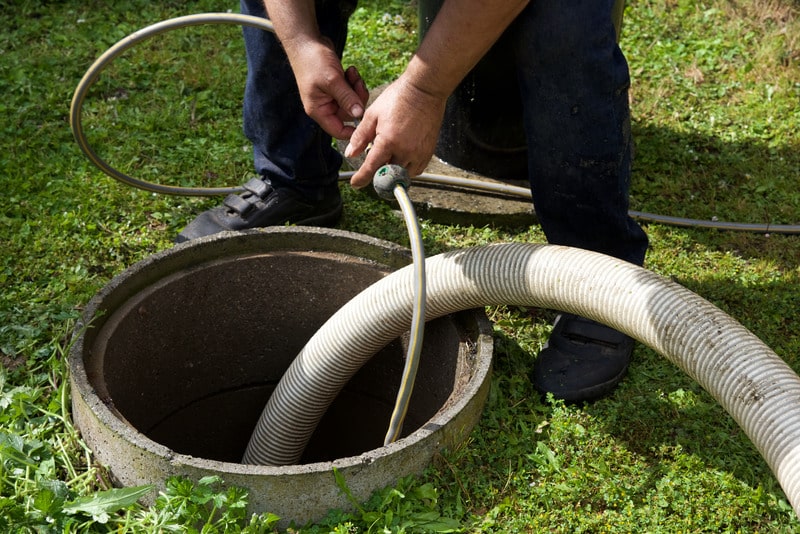Stillwell Septic And Grading for Dummies
Stillwell Septic And Grading for Dummies
Blog Article
About Stillwell Septic And Grading
Table of ContentsHow Stillwell Septic And Grading can Save You Time, Stress, and Money.An Unbiased View of Stillwell Septic And GradingThe Best Guide To Stillwell Septic And GradingGetting My Stillwell Septic And Grading To WorkThe Only Guide for Stillwell Septic And GradingAll About Stillwell Septic And GradingThe smart Trick of Stillwell Septic And Grading That Nobody is Talking About
Generally, septic container setup is a complex procedure that needs cautious planning and execution. Home owners need to function with a respectable setup group and know neighborhood regulations and requirements to make certain that their septic tank functions correctly for many years ahead. After the septic system has actually been set up and attached to the drain field, it is time to backfill the location.The backfill product need to be devoid of clods, huge rocks, icy matter, and particles that can cause voids in the backfill that might enable settling with time. Crushed rock or pea gravel 1/2-inch in diameter is liked if indigenous materials are not ideal. Once the backfilling is total, it is time to landscape the location.
When the septic tank has been set up, it is important to test it to guarantee that it is functioning appropriately (Septic Inspection). http://dugoutmugs01.unblog.fr/?p=3456. Examining the system includes inspecting for leaks, ensuring that the storage tank is at the suitable level, and examining the drainpipe area. Among the most common examinations done is the hydraulic tons test
Get This Report on Stillwell Septic And Grading
The water is after that kept track of to guarantee that it streams appropriately with the pipelines and right into the drainpipe field. If the water does not move correctly or supports into the container, it may suggest an issue with the system. One more test that is frequently executed is the color examination.
The dye is then kept an eye on to make sure that it streams properly through the pipes and into the drain area. If the dye does not flow properly or shows up in the wrong place, it might show an issue with the system. It is necessary to have a specialist perform these examinations to guarantee that they are done appropriately.

Some Of Stillwell Septic And Grading
Below are some vital ideas for house owners to keep their septic tank: The ordinary house septic system should be inspected a minimum of every three years by a septic service specialist. The regularity of pumping relies on the dimension of the storage tank and the number of people using it. https://anotepad.com/note/read/24cj6eyr. A general general rule is to pump the storage tank every 3 to five years
Making use of water-efficient components and appliances, such as low-flow showerheads and toilets, can reduce water usage and help the septic system job extra successfully. Just flush commode paper and human waste down the toilet. Stay clear of purging anything else, including feminine health products, child wipes, and food preparation grease, as they can block the system.
Unknown Facts About Stillwell Septic And Grading
Septic system setup is a complex procedure that requires mindful planning and implementation. Home owners should recognize the essential steps entailed in the installation process to ensure that their septic tank works appropriately and efficiently. The initial action is to examine the website where the septic system will certainly be mounted.
The imp source dirt type will certainly impact just how rapidly wastewater is soaked up and filtered. As soon as the site has been examined, the following action is to prepare for the setup. This involves acquiring the essential permits and inspections, in addition to picking the best professional for the work. House owners have to guarantee that their specialist is experienced in septic system installation and will work alongside them throughout the process.
Stillwell Septic And Grading Things To Know Before You Get This

Property owners have to understand the required steps included in the installation procedure to make certain that their septic tank works correctly and efficiently. By complying with these steps and maintaining their system, home owners can feel confident that their septic system will provide reliable wastewater treatment for several years to find.
Almost one in 5 U.S. homes have septic systems. If you're not effectively preserving your septic system, you're not just injuring the environment, you're placing your family's health and wellness at riskand might be purging thousands of dollars down the drainpipe!
Stillwell Septic And Grading - An Overview

All that additional water can actually stress your septic system. This can be handy particularly if your system has not been pumped in a long time.
Things about Stillwell Septic And Grading
Know your system's area. When you have the tank pumped, draw a layout or map revealing its area in relation to dealt with factors - corners of the residence, actions, or fence messages.
Lower the quantity of wastewater that should be dealt with and disposed of by your system: Clean no even more than one or 2 tons of clothing daily. Up to 53 gallons of water flooding your septic system with each load, so it's ideal to spread out laundry out over the week.
Report this page